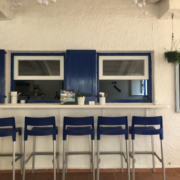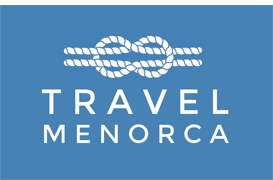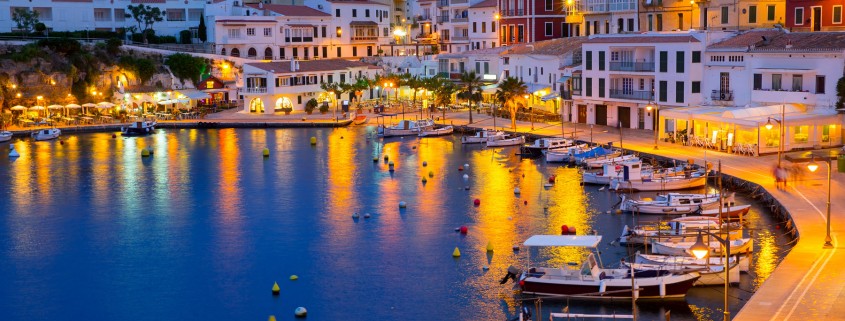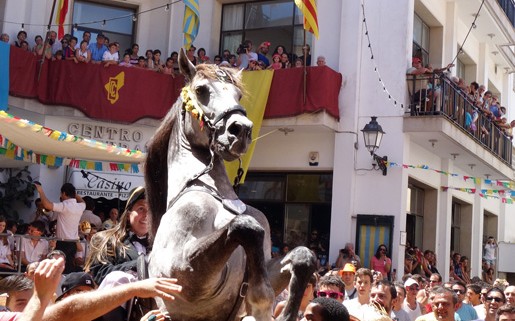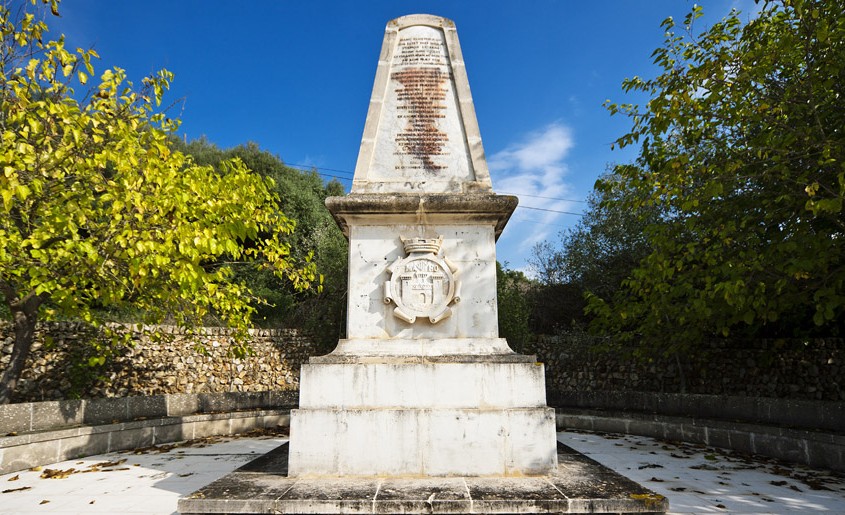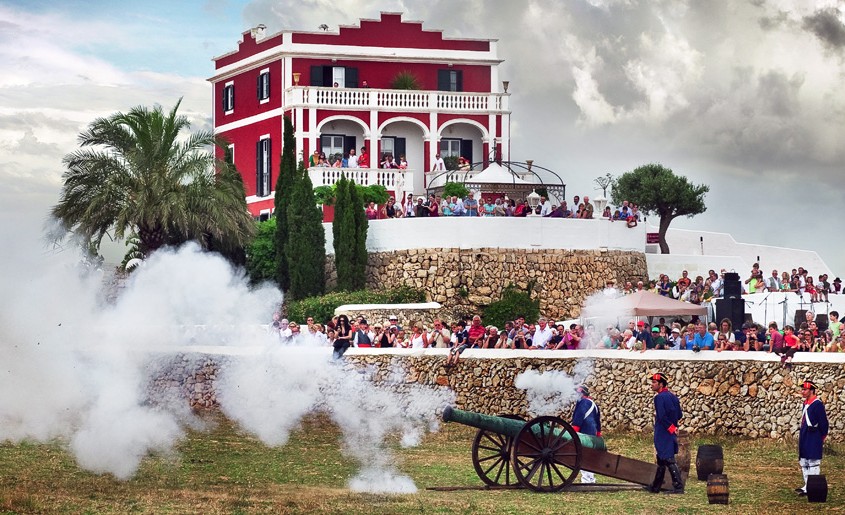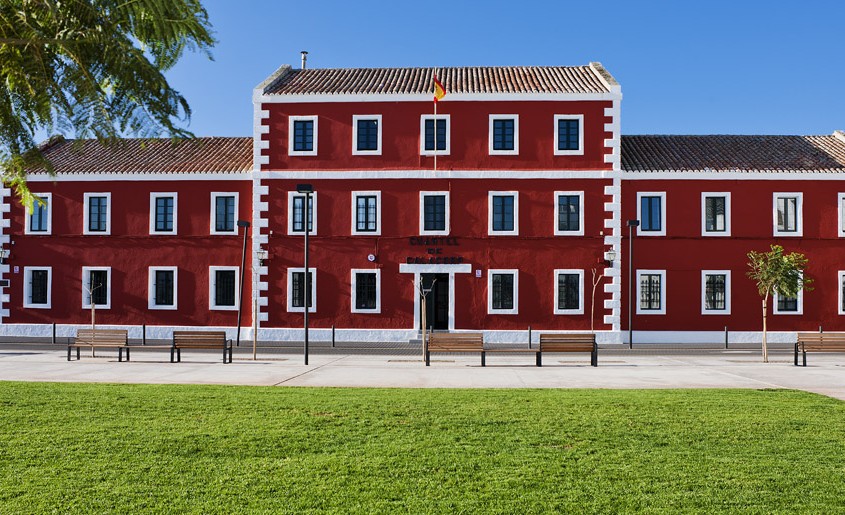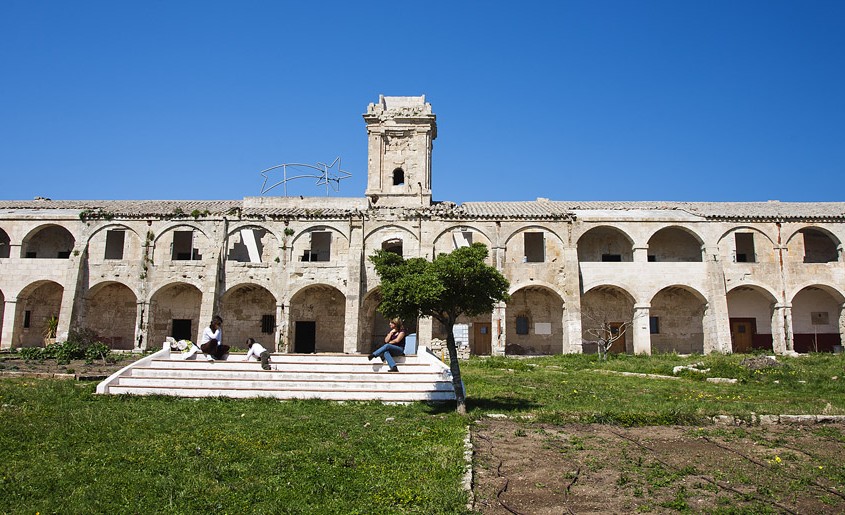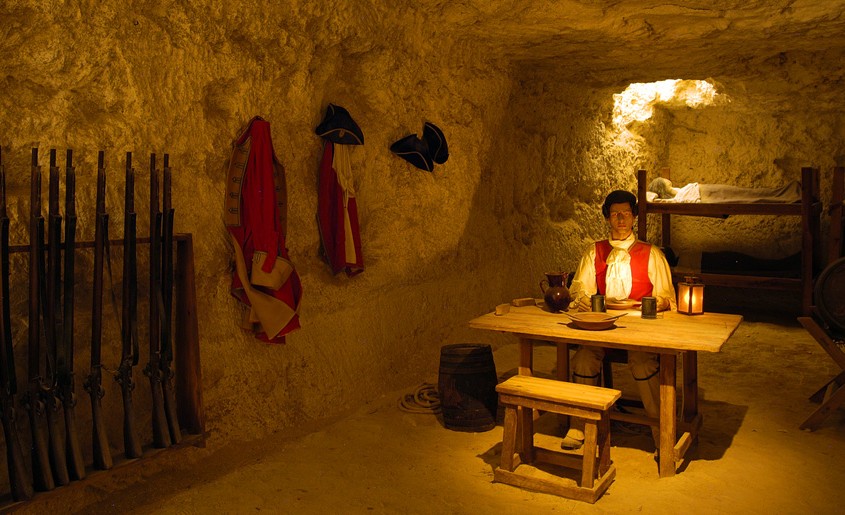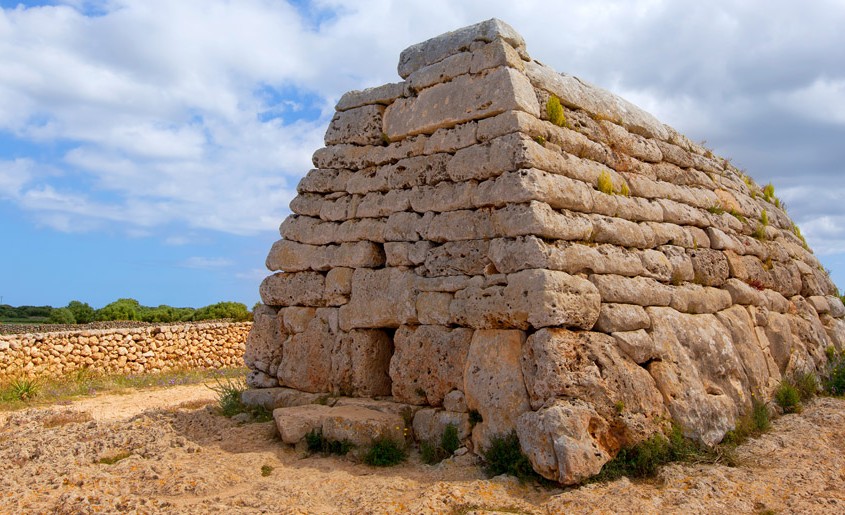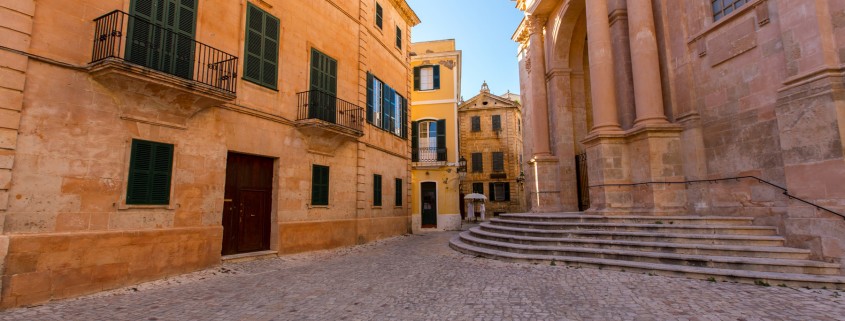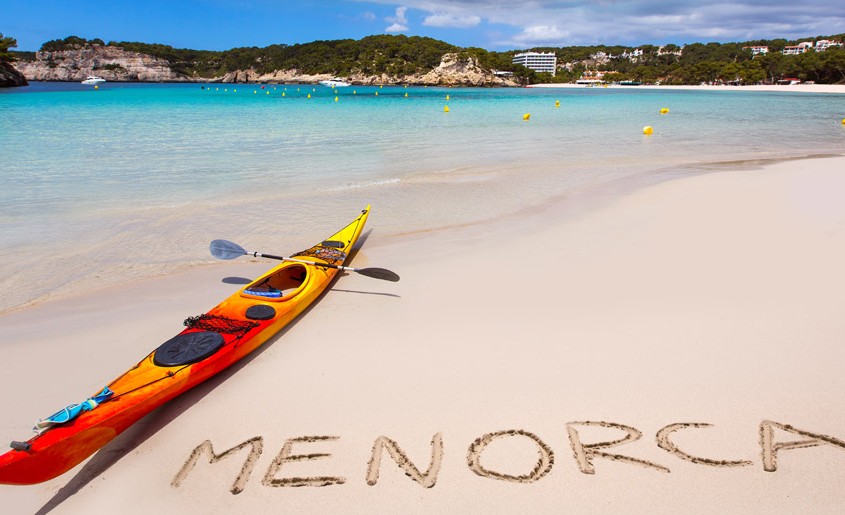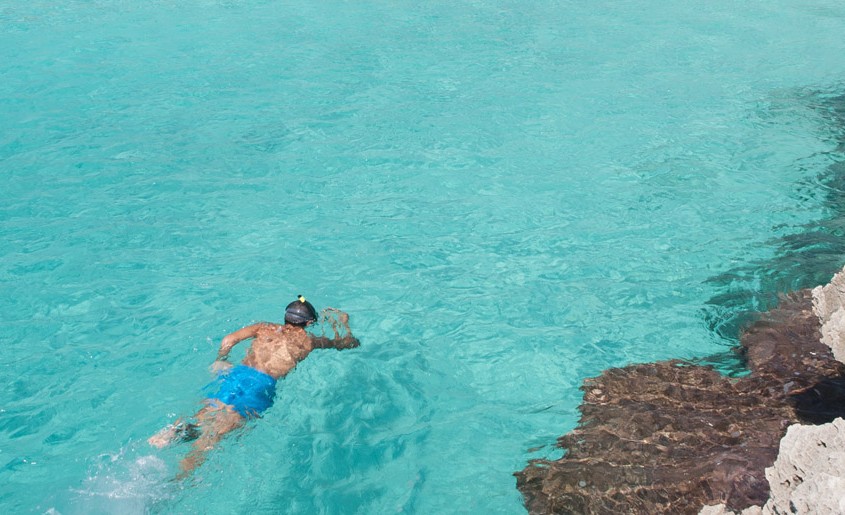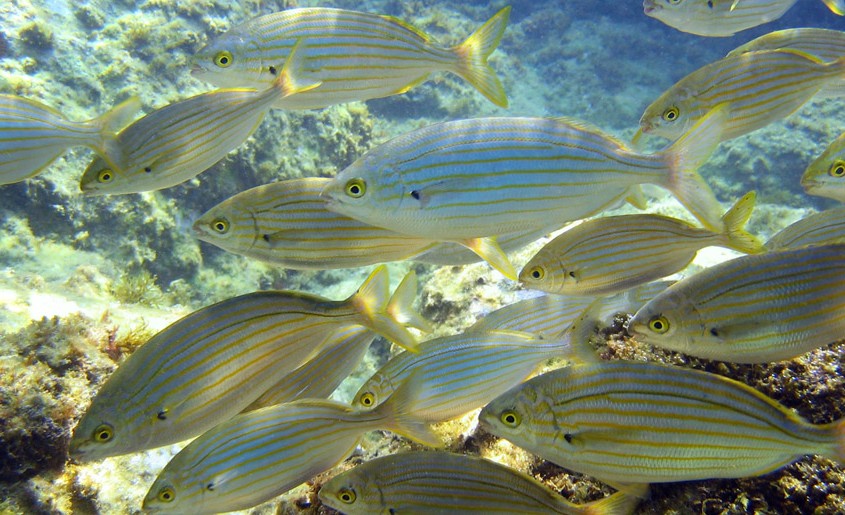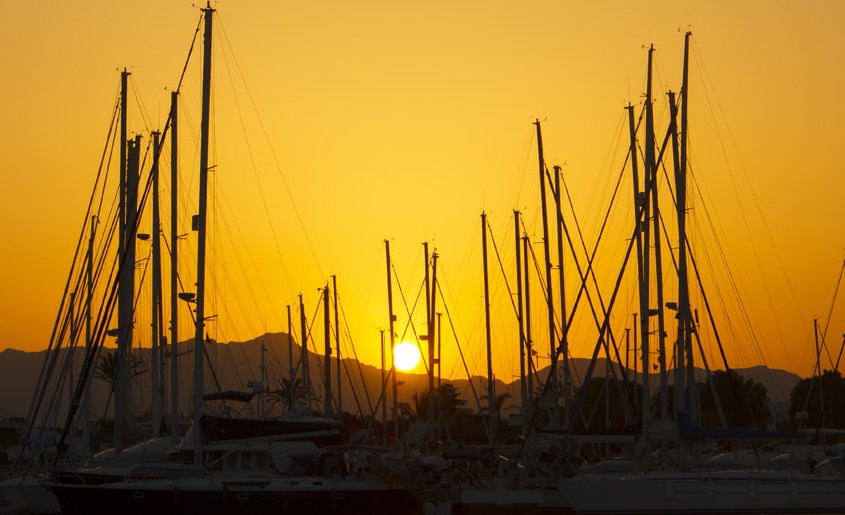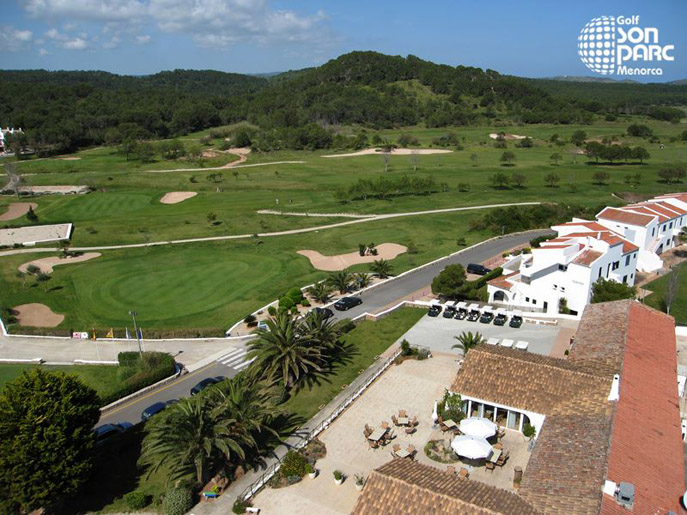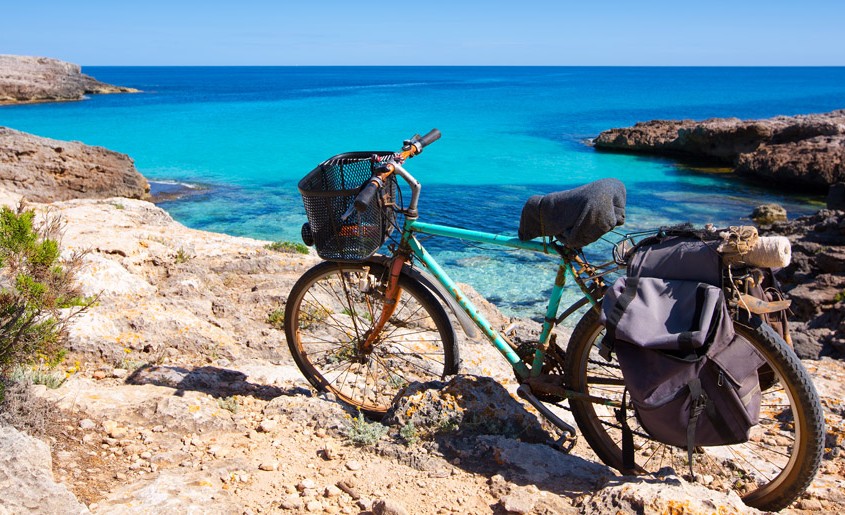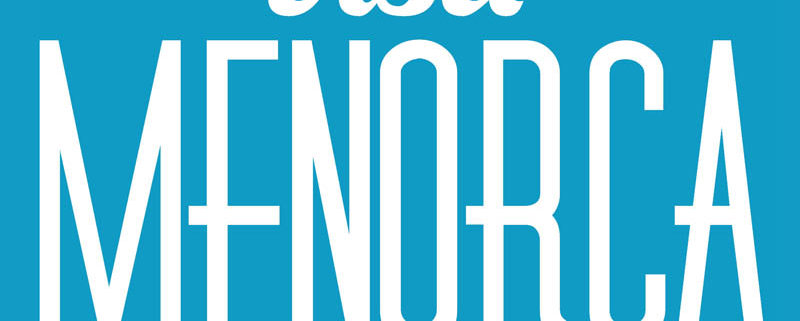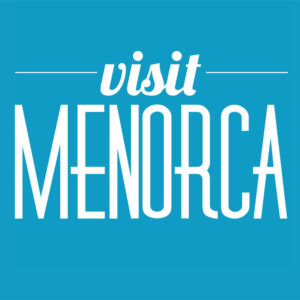There’s a host of things to do and to see in Menorca in addition to the traditional pastimes of lying on a beach towel or a poolside lounger. Here are 10 of the best…
1 Get out on the water
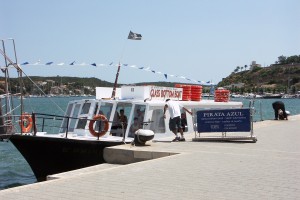 Mahon harbour is a beautiful spot to cruise, and you can pick up a relatively inexpensive ticket for a ‘glass-bottomed’ boat tour on the portside at Mahon and from Calas Fonts in Es Castell. The trips last around an hour and visit the fascinating landmarks that have shaped Menorca’s past and also offer wonderful underwater views. La Mola Fortress, the Isla del Rey British Military Hospital, Lazaretto Quarantine Island, Fort Marlborough and the Sant Felip Castle are just some of the fascinating sights you can see. Commentaries usually given in several languages. It’s also possible to take boat trips from other resorts, including Cala Galdana and Cala en Bosc, to whisk you off to a remote beaches.
Mahon harbour is a beautiful spot to cruise, and you can pick up a relatively inexpensive ticket for a ‘glass-bottomed’ boat tour on the portside at Mahon and from Calas Fonts in Es Castell. The trips last around an hour and visit the fascinating landmarks that have shaped Menorca’s past and also offer wonderful underwater views. La Mola Fortress, the Isla del Rey British Military Hospital, Lazaretto Quarantine Island, Fort Marlborough and the Sant Felip Castle are just some of the fascinating sights you can see. Commentaries usually given in several languages. It’s also possible to take boat trips from other resorts, including Cala Galdana and Cala en Bosc, to whisk you off to a remote beaches.
2 Sample the highlife
Menorca is not notably hilly, but there is one amazing vantage point not to be missed: Monte Toro, near Es Mercadal, which rises 358m above sea level and offers panoramic views across the island, and even as far as Mallorca on a clear day. The summit is approached by a steep winding road at the top of which there is a sanctuary dating back to the 17th century, parts of which are still in use today by a community of Franciscan nuns. There is a little chapel which houses a statue of the Black Madonna, known as the Verge del Toro, and a large statue of Jesus, dedicated to Menorcans who died in the Spanish Moroccan wars of the early 20th century.
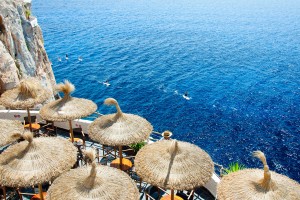 3 Sundowners in the cliff caves
3 Sundowners in the cliff caves
Cova d’en Xoroi at Cala en Porter (right) is a spectacular cliffside bar with outside terraces set within natural caves 25m above sea level. There’s no better place from which to view sunset while sipping a cool drink, accompanied by ambient music and breathtaking sea views. By night, the caves are transformed into a very popular night club.
4 A safe bet you’ll enjoy this
The Aero Club and Hippodrome, beside the main Mahon-Sant Lluis road, has a nice bar/restaurant with snooker, pool and so on, as well as a kart track and, once a week on a Saturday evening in the summer months, trotting races, where the jockey sits in a small cart behind the horse. There are also trotting races on Sundays at the Hippodrome near Cala en Blanes, Ciutadella. Betting is limited to small amounts.
5 Shop till you drop
The city centres of Mahon and Ciutadella (pictured top) offer great shopping opportunities and a myriad of enticing places at which to rest your feet and take some tapas. An evening stroll along Mahon port, or around the Calas Fonts harbour at Es Castell, is not complete without some window shopping for fashion, jewellery and souvenirs. Out of town, we recommend the fabulous Jaime Mascaro factory shop at Ferreries, where the Pretty Ballerinas are made. There are lively local markets in Mahon on Tuesdays and Saturdays, Es Castell Mondays/Wednesdays, Alayor Thursdays, Ferreries Tuesdays/Fridays, and Ciutadella Fridays and Saturdays.
6 Hitting the right note
The Casino bar/restaurant at Sant Climent holds brilliant jazz nights every Tuesday during the summer months. If your ear is tuned more to the classical, head to Mahon’s Santa Maria Church, where you can hear organ recitals daily at 11am.
7 Get in the spirit
The British occupation of Menorca during the 18th century brought more than better roads and farming techniques to the island: the locals were also taught how to make gin. And it has to be said that the Mahon-distilled Xoriguer gin is very, very good indeed. You can see how it’s made, and sample it of course, at the portside Xoriguer factory.
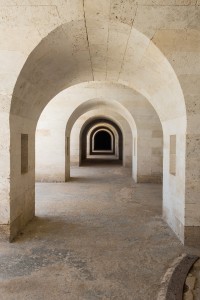 8 Charge of the history brigade
8 Charge of the history brigade
The 19th century La Mola fortress (right) at the entrance to Mahon harbour is a striking landmark and has been a popular visitor attraction for many years; now you can visit its more remote parts aboard an electric buggy, the better to get a feel for its architecture and natural environment. It’s also great fun for the kids.
9 Seaside safari
There are some magical places in Menorca that the tour buses can never reach. To really penetrate the island’s beauty, you need to go off-road with Jeep Safari Menorca. They’ll take you out for a whole day in the countryside, feed you at their exclusive seaside finca and convey you to an idyllic beach for good measure.
10 In vino veritas
They make wine in Menorca, and very good it is too. A visit to the Binifadet winery in Sant Lluis is a must, even if you don’t want a guided tour of the vineyard and wine-making process. To sit on the Binfadet terrace and sample the reasonably priced wine made on the premises is as close to paradise as you’ll find in Menorca. Great food is served, too, but you may need to book a table at busy times. You can order a case of wine to be shipped home, too.
Plenty more sightseeing/activity tips at our Sporting Menorca and Historical Menorca sections…
pp
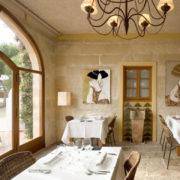 Just out of the town on the road to Sant Lluis are two hotels with great restaurant reputations: Biniarroca and St Joan de Binissaida (pictured).
Just out of the town on the road to Sant Lluis are two hotels with great restaurant reputations: Biniarroca and St Joan de Binissaida (pictured).